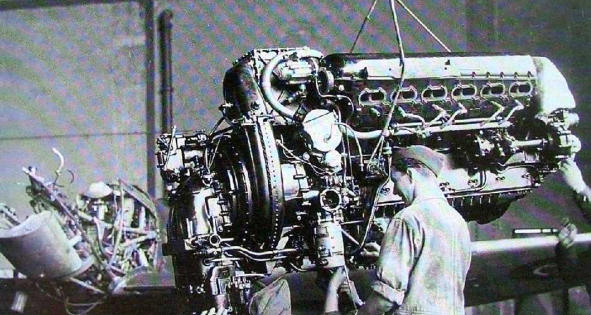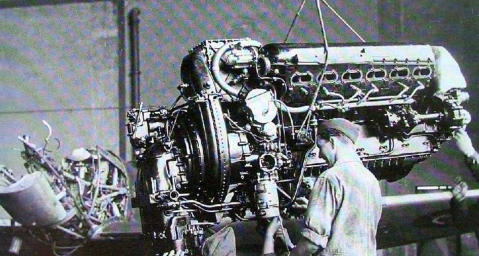
North Weald Airfield Museum is a registered charity, No 1081157. Run and staffed by volunteers.
The Battle Of Britain 1940
The Battle for Britain began during the spring and summer of 1940 with the Luftwaffe targeting coastal towns and shipping. The North Weald
squadrons quickly became heavily involved in fierce encounters with the Germans and many good men were killed. Everybody at the airfield felt
the losses intensely, but under Beamish's command the station pulled together to do whatever was necessary to give the pilots the best possible
chance in combat.
This, and similar situations like it at other fighter stations, was one of the reasons why the Luftwaffe turned its attention to the destruction of the
RAF's airfields in the next phase of the battle.
The first major raids on RAF North Weald took place on the afternoon of 24 August, when more than 200 bombs fell on North Weald. At around
4.30pm German bombers and fighters, harassed by the defending RAF Hurricanes, headed for the airfield at around 15,000 feet and proceeded
to drop bombs "in a straight line through the western part of the village across the Epping to Ongar road" before hitting the airfield itself.
The
Officers
Mess,
the
Officers
and
Airman's
Married
Quarters,
a
powerhouse
and
other
facilities
were
damaged.
Nine
young
members
of
the
Essex
Regiment,
who
were
attached
to
the
airfield
for
ground
defence,
were
among
those
killed
that
day.
In
North
Weald
High
Road,
the
old
Post
Office, a cottage opposite the Kings Head and the Woolpack Pub were wrecked.

On 3 September, just as the fighters were taking off, the
Luftwaffe again bombed North Weald. The damage was
substantial with aircraft, hangars, living quarters, the
operations room and other station buildings destroyed -
leaving 5 people dead and 39 injured.
The attacks exacerbated the exhaustion that all at the
airfield felt, but Beamish was an inspiration throughout.
Indeed, he flew regularly with No 46 Squadron and was
awarded the DSO in recognition of his leadership skills.
Mid-September brought an opportunity for the station to catch its breath when the German attacks on airfields abated. But it was not long
before the fighters were again in demand to combat German raids over London. Throughout this period, North Weald played a pivotal role in the
struggle to keep the skies above the capital clear of enemy aircraft. Losses were heavy, but many in North Weald thought that at least the threat
to the airfields had passed..
Sadly, they were wrong, for on 29 October, just a few days before the Battle of Britain ended, the station was bombed again,, killing six and
wounding 42. This attack was an agonising end to a defensive battle that had seen North Weald and her resident squadrons emerge with a great
deal of credit.
Thirty-nine aircrew from North Weald and its satellite airfield at Stapleford Tawney were killed during the "Battle of Britain period" [officially 10
July - 31 October]. But thanks to them and their comrades, on the ground and in the air, the airfield was never put out of action.
2025

North Weald Airfield Museum is a registered charity, No 1081157.
Run and staffed by volunteers.

The Battle Of Britain 1940
The
Battle
for
Britain
began
during
the
spring
and
summer
of
1940
with
the
Luftwaffe
targeting
coastal
towns
and
shipping.
The
North
Weald
squadrons
quickly
became
heavily
involved
in
fierce
encounters
with
the
Germans
and
many
good
men
were
killed.
Everybody
at
the
airfield
felt
the
losses
intensely,
but
under
Beamish's
command
the
station
pulled
together
to
do
whatever
was
necessary
to
give
the
pilots
the
best
possible chance in combat.
This,
and
similar
situations
like
it
at
other
fighter
stations,
was
one
of
the
reasons
why
the
Luftwaffe
turned
its
attention
to
the
destruction
of
the
RAF's
airfields
in
the
next
phase
of
the
battle.
The
first
major
raids
on
RAF
North
Weald
took
place
on
the
afternoon
of
24
August,
when
more
than
200
bombs
fell
on
North
Weald.
At
around
4.30pm
German
bombers
and
fighters,
harassed
by
the
defending
RAF
Hurricanes,
headed
for
the
airfield
at
around
15,000
feet
and
proceeded
to
drop
bombs
"in
a
straight
line
through
the
western
part
of
the
village
across
the
Epping
to
Ongar
road"
before
hitting
the
airfield itself.
The
Officers
Mess,
the
Officers
and
Airman's
Married
Quarters,
a
powerhouse
and
other
facilities
were
damaged.
Nine
young
members
of
the
Essex
Regiment,
who
were
attached
to
the
airfield
for
ground
defence,
were
among
those
killed
that
day.
In
North
Weald
High
Road,
the
old
Post
Office,
a
cottage
opposite
the
Kings
Head
and
the
Woolpack
Pub were wrecked.

On
3
September,
just
as
the
fighters
were
taking
off,
the
Luftwaffe
again
bombed
North
Weald.
The
damage
was
substantial
with
aircraft,
hangars,
living
quarters,
the
operations
room
and
other
station
buildings
destroyed
-
leaving 5 people dead and 39 injured.
The
attacks
exacerbated
the
exhaustion
that
all
at
the
airfield
felt,
but
Beamish
was
an
inspiration
throughout.
Indeed,
he
flew
regularly
with
No
46
Squadron
and
was
awarded
the
DSO in recognition of his leadership skills.
Mid-September
brought
an
opportunity
for
the
station
to
catch
its
breath
when
the
German
attacks
on
airfields
abated.
But
it
was
not
long
before
the
fighters
were
again
in
demand
to
combat
German
raids
over
London.
Throughout
this
period,
North
Weald
played
a
pivotal
role
in
the
struggle
to
keep
the
skies
above
the
capital
clear
of
enemy
aircraft.
Losses
were
heavy,
but
many
in
North
Weald
thought
that
at
least the threat to the airfields had passed..
Sadly,
they
were
wrong,
for
on
29
October,
just
a
few
days
before
the
Battle
of
Britain
ended,
the
station
was
bombed
again,,
killing
six
and
wounding
42.
This
attack
was
an
agonising
end
to
a
defensive
battle
that
had
seen
North
Weald
and
her
resident
squadrons
emerge
with
a
great
deal
of credit.
Thirty-nine
aircrew
from
North
Weald
and
its
satellite
airfield
at
Stapleford
Tawney
were
killed
during
the
"Battle
of
Britain
period"
[officially
10
July
-
31
October].
But
thanks
to
them
and
their
comrades,
on
the
ground
and
in
the
air,
the
airfield
was never put out of action.
North Weald Airfield Museum is a registered charity,
No 1081157. Run and staffed by volunteers.
2025

























